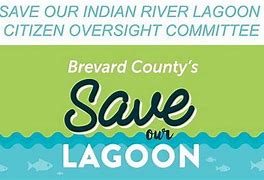Save Our Indian River Lagoon 100th Project Celebration: Clams Across the Lagoon
Brevard County’s Save Our Indian River Lagoon (SOIRL) Program is excited to announce the completion of its 100th pollution reduction project and will be hosting a public event to celebrate this milestone. Ten years ago, multiple causeways hosted residents from the Indian River Lagoon’s five counties as they joined hands to inform others about how to create a cleaner estuary.
On February 1, from 10 a.m. to 2:30 p.m., you can learn how decreased algae blooms, better water clarity, and expanding seagrass beds are signs of progress. To capitalize on these improving conditions, the University of Florida and Brevard Zoo have been growing millions of nature’s filtration engineers – clams – to release into the lagoon.
Residents are invited to join together across the Max Brewer Bridge to release 100,000 clams into the Indian River Lagoon. In addition, the many community partners that have helped complete these projects will be on hand with exhibits and games. Food trucks will also be on-site to enjoy.
Contact: Aleah Ataman
Phone: (321) 633-2016
Email: aleah.ataman@brevardfl.gov
Location: Sand Point Park
Street: 101 N Washington Ave
Native Vegetation Buffer Zone
In partnership with the Brevard Zoo’s Restore Our Shores program, Sand Point Park now features a 960 sq. ft. Native Vegetation Buffer Zone. These zones help to remove nutrients from stormwater, create no fertilizer, and no-mow buffers to prevent herbicides and lawn clippings from entering the Indian River Lagoon. The zones also provide habitat and forage for local wildlife.
The Brevard Zoo staff and local volunteers prepped the site, installed landscape edging, and planted the Florida native vegetation throughout the month of December 2023. Learn more about Titusville’s efforts.

The Save Our Indian River Lagoon Program was created with the ½ cent sales tax that Brevard County residents voted to impose on themselves in 2016. The program is designed to address excess nitrogen and phosphorus pollution to the Indian River Lagoon through various projects to reduce pollution inputs, remove legacy loads of pollution, and restore natural filtration systems. It is estimated that the plan will bring in up to $586 million in revenue over 10 years to fund projects that will reduce or remove over 1.3 million pounds of excess nitrogen and 106 thousand pounds of phosphorus annually from the Indian River Lagoon.
The projects being completed by the Save Our Indian River Lagoon Program are just one part of restoring the Indian River Lagoon. The National Estuary Program, St Johns River Water Management District, Brevard County and the cities have been working on stormwater improvements since the 90s. Currently, new technologies are being incorporated to improve stormwater and wastewater utilities. The lagoon will also need the assistance of the community to help reduce the amount of nitrogen and phosphorus created by homes and businesses. Learn more on how to reduce your personal impact by visiting the Lagoon Loyal website .
Source: Brevard County







